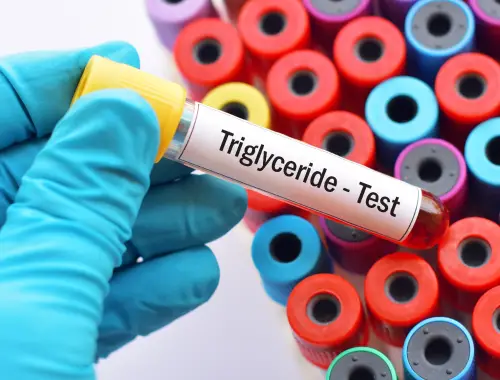
Cholesterol and triglycerides are two types of lipids, or fats, that play essential roles in the body’s functioning. While they share similarities, they also have distinct characteristics that contribute to their unique roles. Understanding these similarities and differences is crucial for maintaining a healthy balance and preventing health issues.

Chemical Structure:
- Both cholesterol and triglycerides are composed of carbon, hydrogen, and oxygen atoms.
- They are classified as lipids due to their hydrophobic nature, meaning they do not dissolve in water.
Essential for Cell Structure:
- Cholesterol is a vital component of cell membranes, providing structural integrity and fluidity.
- Triglycerides serve as a major source of energy for cells, especially in tissues like muscles and adipose tissue.
Synthesized in the Liver:
- The liver is a key organ involved in the production of both cholesterol and triglycerides.
- Cholesterol is synthesized in the liver and is also obtained from dietary sources.
- Triglycerides are produced in the liver and adipose tissue, influenced by dietary intake.
Transported in the Blood:
- Both cholesterol and triglycerides are transported in the bloodstream, albeit in different forms.
- Cholesterol is transported as lipoproteins, such as LDL (low-density lipoprotein) and HDL (high-density lipoprotein).
- Triglycerides are carried in the blood within lipoproteins, primarily in the form of VLDL (very-low-density lipoprotein).
Cholesterol is crucial for various physiological functions, including the synthesis of hormones (estrogen, testosterone), vitamin D, and bile acids. However, an excess of LDL cholesterol can lead to the buildup of plaque in arteries, contributing to atherosclerosis and cardiovascular diseases.
Triglycerides are the body’s primary storage form of fat. They store energy that can be released when needed, providing fuel for cellular activities. Elevated triglyceride levels, often associated with a high-fat diet, obesity, or diabetes, can increase the risk of heart disease.
Both cholesterol and triglycerides undergo regulation through dietary and lifestyle factors. Healthy lifestyle choices, including a balanced diet and regular exercise, can help maintain optimal levels and reduce the risk of related health issues.
| Aspect | Cholesterol | Triglycerides |
|---|---|---|
| Chemical Structure | Carbon, hydrogen, and oxygen atoms | Carbon, hydrogen, and oxygen atoms |
| Role in Cell Structure | Vital component of cell membranes, providing structural integrity and fluidity | Major source of energy for cells, especially in muscles and adipose tissue |
| Synthesis Location | Synthesized in the liver and obtained from dietary sources | Produced in the liver and adipose tissue, influenced by dietary intake |
| Transport in Blood | Transported as lipoproteins (LDL, HDL) in the bloodstream | Carried in the blood within lipoproteins, primarily in the form of VLDL |
| Physiological Functions | Essential for hormone synthesis, vitamin D production, and bile acid formation | Primary storage form of fat, releasing energy when needed |
| Regulation Factors | Dietary choices, lifestyle, and genetic factors impact levels | Diet, physical activity, and underlying health conditions affect levels |
In conclusion, while cholesterol and triglycerides share similarities in their chemical structure and roles in cell function, they also have distinct functions and implications for health. Striking a balance in their levels is crucial for overall well-being. Awareness of dietary choices, regular exercise, and medical monitoring can contribute to maintaining a harmonious lipid profile. Understanding these aspects empowers individuals to make informed decisions and take proactive measures for cardiovascular health.
Q1: What are cholesterol and triglycerides?
- A1: Cholesterol and triglycerides are types of lipids, or fats, essential for various bodily functions. Cholesterol is crucial for cell structure and hormone synthesis, while triglycerides serve as a primary energy source.
Q2: What is the chemical structure of cholesterol and triglycerides?
- A2: Both cholesterol and triglycerides are composed of carbon, hydrogen, and oxygen atoms. They are classified as lipids due to their hydrophobic nature.
Q3: Where are cholesterol and triglycerides synthesized?
- A3: Cholesterol is synthesized in the liver and obtained from dietary sources. Triglycerides are produced in the liver and adipose tissue, influenced by both diet and genetic factors.
Q4: How are cholesterol and triglycerides transported in the blood?
- A4: Cholesterol is transported as lipoproteins, such as LDL (low-density lipoprotein) and HDL (high-density lipoprotein). Triglycerides are carried in the blood within lipoproteins, primarily in the form of VLDL (very-low-density lipoprotein).
Q5: What roles do cholesterol and triglycerides play in the body?
- A5: Cholesterol is essential for cell membrane integrity, hormone synthesis, and vitamin D production. Triglycerides serve as a major energy source, especially in muscles and adipose tissue.
Q6: How are cholesterol and triglycerides regulated?
- A6: Dietary choices, lifestyle factors, and genetic predisposition impact cholesterol levels. Triglyceride levels are influenced by diet, physical activity, and underlying health conditions.
Q7: What health risks are associated with high levels of cholesterol and triglycerides?
- A7: Elevated LDL cholesterol levels can contribute to atherosclerosis and cardiovascular diseases. High triglyceride levels are associated with an increased risk of heart disease.
Q8: How can one maintain a healthy balance of cholesterol and triglycerides?
- A8: Adopting a balanced diet, engaging in regular exercise, and managing underlying health conditions contribute to maintaining optimal levels of cholesterol and triglycerides.
Q9: Are there specific medical conditions that affect cholesterol and triglycerides?
- A9: Conditions such as diabetes, obesity, and genetic factors can influence lipid levels. Regular monitoring and consultation with healthcare professionals are essential for managing lipid profiles.
Q10: What are some reliable references for more information on cholesterol and triglycerides?
- A10: References such as the American Heart Association and the National Institute of Diabetes and Digestive and Kidney Diseases provide comprehensive information on cholesterol and triglycerides.
Q11: Can cholesterol and triglycerides be found in food?
- A11: Yes, both cholesterol and triglycerides can be obtained from dietary sources. Cholesterol is present in animal-based foods, while triglycerides are found in fats and oils.
Q12: How do lifestyle choices impact cholesterol and triglyceride levels?
- A12: Unhealthy lifestyle choices, such as a diet high in saturated and trans fats, sedentary behavior, and smoking, can contribute to elevated levels of cholesterol and triglycerides.
Q13: Are there medications to manage cholesterol and triglyceride levels?
- A13: Yes, statins and other lipid-lowering medications are commonly prescribed to manage cholesterol levels. Lifestyle modifications and medications may also be recommended for triglyceride management.
Q14: Can genetics play a role in cholesterol and triglyceride levels?
- A14: Yes, genetic factors can influence lipid levels. Some individuals may have a genetic predisposition to higher cholesterol or triglyceride levels, requiring personalized management approaches.
Q15: How do cholesterol and triglyceride levels change with age?
- A15: Cholesterol and triglyceride levels can vary with age. While cholesterol levels tend to increase with age, triglyceride levels may be influenced by factors such as hormonal changes and lifestyle.
Q16: Are there specific dietary recommendations to control cholesterol and triglycerides?
- A16: Adopting a heart-healthy diet that includes fruits, vegetables, whole grains, and lean proteins can help manage cholesterol and triglyceride levels. Limiting saturated and trans fats is also advisable.
Q17: Can physical activity impact cholesterol and triglycerides?
- A17: Yes, regular exercise can positively affect lipid levels. Physical activity helps raise HDL (good) cholesterol and may contribute to overall cardiovascular health.
Q18: How often should one have their cholesterol and triglyceride levels checked?
- A18: The frequency of lipid level checks depends on individual health factors. Generally, adults are advised to have their cholesterol checked at least once every four to six years, with more frequent monitoring for those at risk.
Q19: Can weight loss affect cholesterol and triglyceride levels?
- A19: Yes, losing excess weight through a combination of a healthy diet and regular exercise can positively impact lipid profiles, including cholesterol and triglycerides.
Q20: What are the potential consequences of ignoring high cholesterol and triglyceride levels?
- A20: Ignoring elevated lipid levels may lead to serious health complications, including an increased risk of heart disease, stroke, and other cardiovascular issues. Regular monitoring and proactive management are essential for overall well-being.

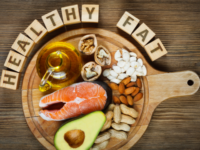
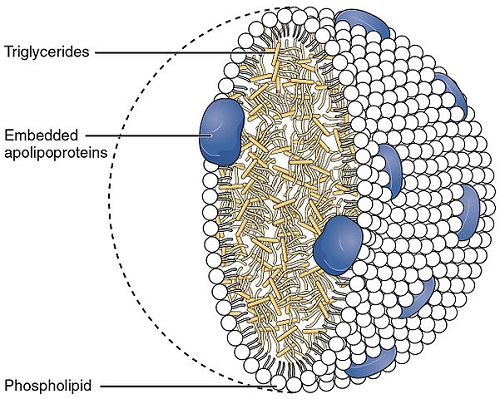


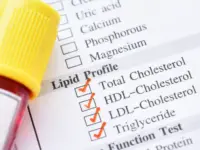
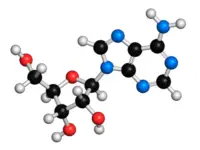





Leave a Reply